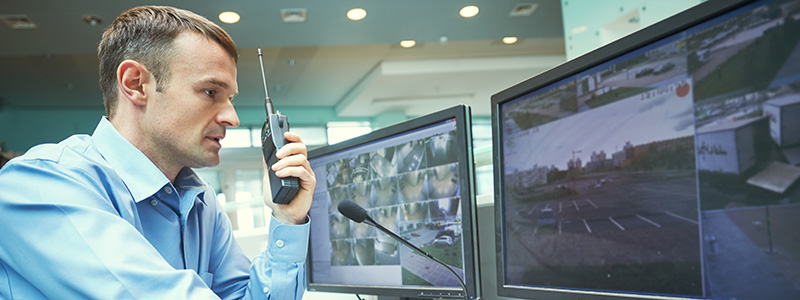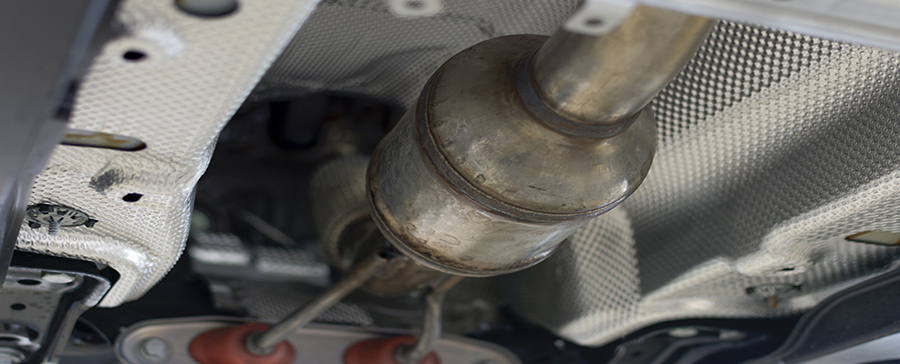Resources

CDC Resources for Churches
After months without services, most churches have carefully resumed gatherings. But with new variants posing a previously unknown threat now – COVID is still among us. Many pastors and congregations wonder what they should do going forward.
How should the people of God continue to gather and worship while staying safe and healthy? When people ask us, we refer them to the experts.
The Centers for Disease Control and Prevention has published a webpage headlined "Toolkit for Community and Faith-Based Organizations." It doesn’t try to dictate rules or regulations but offers practical “guidance and tools to help community and faith-based organizations make decisions, communicate with their communities, and protect their employees, volunteers and members.”
That, and the overall COVID homepage, provide a number of resources such as basic information about the coronavirus, what is and isn't considered safe after getting vaccinated, how to clean and disinfect a facility and other key things to consider.
Each congregation must assess the information and make its own decisions as it moves forward. The information on those pages will be helpful in making such decisions.
Beyond the above, the CDC provides a number of other information resources, such as:
- A page devoted to What’s New and Updated on the agency’s website – because the situation keeps changing, and new material appears multiple times every day.
- Free documents you can print out and post for everyone to see.
- Videos devoted to various COVID-related topics, such as explanations of the new Delta variant.
It is our hope and prayer that everyone in your congregation will stay safe as this health threat continues. We look forward to continuing to serve the church community as we all move forward, through and beyond this lengthy ordeal.

Helpful Links
We have assembled a variety of links on various subjects and hope you will find them useful and convenient.
Darkness to Light
Darkness to Light's public awareness campaign seeks to raise awareness of the prevalence and consequences of child sexual abuse.
KidCheck
Solutions that improve child security, streamline the check-in process, and create a positive parent and visitor experience; all at an exceptional value.
Church Law and Tax
Christian Ministry Resources presents legal, tax, and risk management resources.
Victims of Crime
The National Center for Victims of Crime.
National Children's Alliance
The National Center for Victims of Crime.
Child Welfare Information Gateway
Child Welfare Information Gateway .
Groups Church Volunteer Central
The Association that helps you accomplish big things in your ministry by developing great volunteers.
Georgia Bureau of Investigation
Georgia Sex Offender Registry
Kentucky State Police
Kentucky Sex Offender Registry
North Carolina State Bureau of Investigation
North Carolina Sex Offender Registry
South Carolina Law Enforcement Division
South Carolina Sex Offender Registry
Tennessee Bureau of Investigation
Tennessee Sex Offender Registry
Virginia State Police
Virginia Sex Offender Registry
National Hurricane Center
Hurricane Preparedness and Alerts
S.C. Dept. of Transportation
Hurricane Resources
N.C. Dept. of Transportation
Evacuation Maps
Georgia Dept. of Transportation
Hurricane Information
S.C. Emergency Management Division
Emergency Preparedness

Motor Vehicle Report
Southern Mutual Church Insurance Company strongly believes that preventing losses before they happen benefits not only our policyholders, but more importantly, it protects the members and visitors of your church. We are committed to protecting your property by providing on-site inspections, by our trained personnel, at no cost to the church.
Safety First
From a safety standpoint SMCI believes having more than 8 drivers per vehicle is an increased risk due to a lack of training for a large number of drivers. Also, it is cost-prohibitive for us to run MVRs for a list of more than 8 drivers per vehicle. However, we understand there are times when churches feel they must exceed this limit, and we want to give those churches a tool they can use to provide us with additional MVRs at their own cost. As a part of our loss control procedures when insuring your church bus or van, we obtain Motor Vehicle Reports (MVRs) for the drivers list you provide to us, again at no cost to the church.
SMCI is pleased to expand our relationship with IntellicorpRecords, Inc. Intellicorp has agreed to offer discounted MVRs to churches who mention their affiliation with SMCI. Since each state handles MVR requests differently, each church will need to call Intellicorp directly for procedures and pricing. Please call them toll-free at 1-800-539-3717, and mention to them you are affiliated with Southern Mutual Church Insurance Company.

Gatekeeper Newsletter
Our GateKeeper Newsletter is just one more way SMCI reaches out to our customers to provide timely information about topics that are important to you, as well as information about our company and employees.

Routine Maintenance Reduces Risk and Losses
We know that when you think of doing ministry, you’re probably not envisioning inspecting your roof, replacing filters, and making sure gutters are clear.
But each of these tasks is part of keeping your building and grounds in order. A church that is taken care of can better serve its congregation the community. The last thing anyone should worry about when they come to church is their safety.
Doing routine maintenance needs to be something your church does, like clockwork. If you’re not doing it now, that’s okay. We’re here to walk you through a few basics to get you started.
Fire Safety
- Identify one individual to be responsible for replacing the batteries in all smoke detectors every 6 months and testing their function, as well as making sure that all fire extinguishers are fully charged and their inspection tags are up-to-date.
- Regularly inspect electrical systems and appliances for potential fire hazards.
- Designate one individual to be responsible for extinguishing and checking all candles during the holiday season.
- Never leave burning candles unattended.
- When using candles, carefully select where candles should be placed – do not place near window treatments, decorative foliage or other combustible materials.
- Substitute battery-operated candles for events when possible.
- Collect and store all candles in noncombustible containers.
Plumbing Maintenance
- Water damage in churches can be costly. The good news is that most water problems are preventable. Take time to inspect water sources and potential leaks before problems arise.
- Bathrooms are often a primary source of water loss. Make sure your toilets are flushing correctly and check to see if any are running continuously. Create a routine for someone to walk into your restrooms and listen for any water running, especially after events.
- It’s a good practice to replace the flush valve assemblies and water supply lines every ten years.
- Hot water heaters, another water source, can cause leaks that go undetected for a long time. If possible, put drain pans under your water heater in case it does start leaking. Most water heaters have a life span of around ten years. As your unit ages, check it more frequently for leaks. Consider installing leak detection devices that will alert you in the event a water leak.
Inspect Your Critical Systems-HVAC and Mechanical
- During extreme hot and cold temperatures , your HVAC unit will work harder . Your HVAC usage will increase, but so will other components of your system. Have your HVAC serviced twice a year to prolong its service life and ensure its operational when you need it most.
- Check your electrical panels and mechanical rooms in case of overheating. Maintain at least three feet of clearance around electrical units to prevent fire hazards.
- Avoid storing combustible materials like gas, oil, and anything flammable around your HVAC system and mechanical equipment. Overheating will increase the likelihood of fire, and you want to avoid creating any more fuel that enable flames to spread.
Find and Eliminate Hazards Around Your Property
- Identify any landscaping needs around your grounds. You and your team should walk around and inspect trees, shrubbery, and other natural elements surrounding your church. Make sure limbs are trimmed back to avoid the risk falling debris during wind and ice events.
- During the heat of the summer, fire is much more of a hazard. Many rural churches lack a proper firebreak to slow down flames. It’s essential to have at least 20-25 feet between your building and a line of vegetation.
- Inspect all walking surfaces and grounds for debris and trip hazards.
Properly Dispose of Trash and Debris
- If you’ve worked on any projects lately, make sure you’ve disposed of building materials properly. When pieces of lumber or other equipment sit around, it creates a hazard for people and children.
- Properly dispose of trash, especially food waste, to avoid pest and rodent problems.
Keep Your Play Areas Safe
- If your church has a playground, look for any loose or rotting wood and keep an eye out for nails or sharp objects that could hurt children when they’re out playing.
- Test swing seats and all playground equipment to make sure they’re secure and in good working order. Replace or remove any damaged or defective equipment that could pose a risk to children playing.
Keeping Your Kitchen in Order
- Church kitchens are busy places and are key to many church ministries. Vacation Bible schools, youth programs, and a full event calendar typically mean lots of meals. The kitchen can have many hazards, especially for church members who may not use it very often.
- First things first, make sure you have a fire extinguisher on hand. If you do any type of frying, you’ll need a Class K fire extinguisher.
- If your cooking units (stovetop, range, fryers, etc.) units are commercial grade, you’ll need a commercial hood to keep the kitchen adequately ventilated. Check your hood to make sure it covers all of the equipment used during cooking.
- Regularly replace the filter in your hood and, depending on use, clean the hood quarterly or twice per year.
- Keep all equipment in the kitchen clean. Grease and grime can build up, causing parts to malfunction.
- If your kitchen is equipped with an icemaker, check the supply line occasionally. It’s often neglected but typically the source of issues with ice makers.
- In case of leaks, see if you have a floor drain in your kitchen and it’s clear of obstructions.
Keeping Your Roof Well Maintained
- The roof is typically the most expensive (and critical) part of any building. Churches are no exception. And many churches don’t have the budget to manage costly roof problems.
- A routine inspection by your staff, and professional roofers, can prevent minor issues from becoming significant expenses.
- It’s a best practice to have a licensed roofer inspect your building at least once a year. If your church has a flat roof, it’s a good idea to get on a maintenance plan.
- If you or someone in your church inspect the roof, keep your eye out for a few things, such as nail pop-backs. These often arise during summer when heat causes the shingles to expand and nails to push up. Have a roofer come out and take care of any pop-backs you see.
- Loose shingles, damaged fascia, and other signs of damage are all indications that a roofer needs to be called.
- Trim back tree branches overhanging roof as needed to prevent damage caused by limbs scraping against shingles.
- Take a look inside your attic and see if you have proper ventilation. Lots of heat in attics can shorten the life of a roof.
- Don’t forget your gutters, downspouts, and flashing-all areas of potential leaks.
- By understanding the condition of your roof, you can properly budget for repairs or replacement.
Making Church Maintenance Part of Your Ministry
- Church maintenance is not typically considered a core part of ministry.
- But maintaining a building is what will keep your congregation moving forward as you serve the folks in your community. Having a safe facility and grounds, a clean kitchen, and plumbing that is in good working order will cut down on out-of-pocket and insurance expenses.
- The savings created by good maintenance can be used in other functions of your ministry.
- Take time to establish an inspection routine. Create checklists and assign inspection roles to members of your congregation. In the long run, you’ll mitigate infrastructure problems in your church and be better prepared to deal with problems when they do happen.
Routine maintenance is one of the most cost-effective ways your church can reduce the risks associated with having to file a claim. Doing these things may not seem important at first, but you could prevent an accident that causes injury to a church member or visitor.

Child & Youth Protection Plan
Protecting the Children - Protecting the Church - Protecting Yourself
Unfortunately, sexual misconduct against children is a growing problem in our country, and yes, even in the Church. Southern Mutual Church Insurance offers liability coverage to protect churches after an incident has occurred. However, we want to help churches prevent the abuse from happening in the first place. We have committed to providing this help in several ways.
First, download the Child Youth Protection Manual, or click the link at the bottom. This manual is full of useful tips your church can use as safeguards for your children. There are also several ready-to-use forms, such as an evaluation checklist and a volunteer worker application. This manual is free and we encourage you to save it and print as many copies as you need.
Second, we have several representatives ready to present our Child and Youth Protection Workshop to your church leaders and volunteers. This hour long workshop will equip you with the information you need to start a prevention program at your church or enhance the one you already have in place. Please contact Matthew Quinton at 803-776-9365 to make an appointment.
We are pleased to recommend Intellicorp as a resource for purchasing background checks on volunteers, employees and staff members at a discounted price. For more information on services available, pricing, and ordering instructions, please visit the link below.
Intellicorp Protect My Ministry Child Youth Protection Manual
Learning The Facts
- Experts estimate that one in four girls and one in six boys are sexually abused before their eighteenth birthday.
- The average age for reported sexual abuse is nine years old.
- Twenty-two percent of victims are under the age of eight, and Only one in ten child victims report the abuse.
- Children who are sexually abused and do not “tell” are at a far greater risk than the general population for a host of psychological, emotional, social, and physical problems, often lasting into adulthood.
Minimize opportunity for abuse by eliminating one-adult/one-child situations. Talk about it. Understand why children often keep abuse a secret. Stay alert to signs of possible sexual abuse.
Reducing The Risk
Here are some simple ideas your church can implement to help reduce the risk of sexual abuse in your congregation:
- Establish screening procedures for all volunteers.
- Run background checks on employees and volunteers.
- Institute a minimum six-month waiting period for volunteers.
- Provide periodic and continuous training for staff and volunteers.
- Maintain proper student/teacher ratios.
- Be sure all rooms where children and youth meet have windows in the doors.
- Eliminate one child-one adult interaction at all children/youth.
- Provide counseling only in rooms where the door has a window or the door can be kept open at all times.
- Never counsel or meet one-on-one at someone’s home.

Church Security
Congregation Safety is Your Top Priority
People come to your church seeking refuge and peace. They want a safe place to worship, reflect, and connect. Sadly, churches and religious organizations are increasingly the targets of violent attacks. Church security is something every congregation needs to discuss.
Leaders in the church are rarely security experts. You may not know how to begin church security planning. We're here to offer guidance as you take steps to keep your congregation safe.
Our goal is to provide the information to prepare your church in case of a security emergency. This is not an exhaustive list, but it is a great place for you to start.
Establishing a Church Security Plan
Preparation starts with proper planning. Southern Mutual Church Insurance Company has worked with law enforcement and security consultants to provide great resources for you. Start by checking out our sample Church Security Policies & Procedures Manual.
This guide includes forming a church security team, a checklist of actions your church can take, firearm policy guidance, and emergency planning procedures.
Take a few minutes and watch the video below. Our insurance experts, along with security consultants, discuss what you can do to improve church security and establish a church security plan.
Each church is unique. The measures you take to protect your place of worship should be thoughtfully and prayerfully considered. Leadership needs to be involved in the development of a church security plan.
Additional Resources for Church Security
There is a lot of information available on church security. It can be overwhelming. We’ve put together a few resources for you to begin your research.
The Protector's Toolkit is a great church safety and security company that includes free resources, as well as a paid membership to help you take your church safety response to the next level. Their website includes a free Church Safety and Security Risk Assessment, which is a great place to start with helping assist you in measuring your church's present level of vulnerability.
Strategos International maintains a blog discussing security. Their article titled The 10 Commandments of Church Security is a great starting point for thinking about security and serves as a reminder that there are many other emergencies beyond active shooters. Strategos International stresses the importance of effective church security training.
For more information on church security, training, and equipment, check out the resources below or Click Here to email us your questions about Church Security.
Security Consulting/Training
Protector's Toolkit
CHRISTIAN SAFETY & SECURITY MADE SIMPLE--The world is sometimes a scary and chaotic place; we help you reduce risk,
increase security, and empower your staff so you can provide a safer environment. Protector's Toolkit is a Veteran owned
company that offers free resources, as well as a comprehensive membership program providing on-going training and resources
for your Church Protectors.
Strategos International
From the corporate world to schools, healthcare, churches, the military and Law Enforcement, Strategos International offers the
most sought after and professional protective services, training and security consulting in the world.
The Nehemiah Concept
The Nehemiah Concept is a comprehensive biblical-based program around church security. It’s foundation and purpose are centered
around the scriptures. The program provides congregations with a turn-key method for assembling, training and implementing their
own security teams. Based in Waynesville, NC, The Nehemiah Concept serves all of the states in the SMCIC region.
Federal Agencies
DHS Active Shooter Preparedness
The U.S. Department of Homeland Security (DHS) aims to enhance preparedness through a "whole community" approach by providing
products, tools, and resources to help you prepare for and respond to an active shooter incident.
Guide for Developing Emergency Operations Plans for Houses of Worship
This guide provides houses of worship with information regarding emergency operations planning for
the spectrum of threats and hazards they may face. It discusses actions that may be taken before, during,
and after an incident in order to reduce the impact on property and any loss of life and it encourages
every house of worship to develop an EOP.
Medical Trauma Kits/Training
Refuge Medical
Refuge Medical is a veteran-owned company that provides high quality, made in the USA medical/trauma kits. Refuge
Training also provides training and education at three different levels, giving you the information, tools, and
hands-on training you need to be an immediate responder. Refuge trainers have real-world experience applying the
MARCH-E algorithm to save lives and have more than thirty years of experience.
Tactical Medical Solutions
Years ago, the term
first responder only applied to law enforcement officers, fire rescue personnel, and emergency medical professionals.
Recent events have shown us that the term first responder also includes bystanders, involved participants, and concerned
citizens who happen to be present. Here at TacMed™ Solutions, we understand that being an untrained provider doesn't
diminish the first responder's willingness to help those in need. TacMed™ brings proven life-saving medical gear and
instructions together so that anyone can become a first responder. Mention you are a church organization to receive a discount.
North American Rescue
North American Rescue is dedicated to decreasing preventable death by providing the most effective and
highest quality mission critical products to our military, federal agencies, civilian law enforcement, EMS,
and pre-hospital life savers.
Dark Angel Medical
Direct Action Response Training fills a niche between military self-aid/buddy care training and civilian
EMS training and is geared towards those with little to no medical training or background. It provides the
student with critical, need-to-know information, which can be utilized in a myriad of situations and stresses
the ‘you don’t know what you don’t know’ principle as well as our own principle of “Simplicity Under Stress”.

Beware: Thieves are after your catalytic converter
Remember several years ago when thieves were destroying and stealing air-conditioners from churches to get the copper? Thieves would strike unsuspecting churches by stealing the copper tubing from the units, then when churches needed the air-conditioning – it wouldn’t work. In the meantime, the thieves were making money by selling the copper and costing churches thousands of dollars in the process.
Fast forward a few years and we now have a similar problem, only the valuable metal is much easier to access and steal. Thieves are taking the catalytic converters from the undersides of vehicles and it only takes them a matter of minutes. Catalytic converter theft is soaring as criminals are once again cashing in on the metal price boom.
What is a catalytic converter?
A catalytic converter is something that has been an essential element in vehicles since 1974. It plays an important role in protecting the environment and public health. A catalytic converter is an exhaust emission control device that reduces toxic gases and pollutants in your vehicle’s engine into less-toxic pollutants. It is an unassuming-looking round canister that is part of your exhaust system, located between the engine and the muffler – usually on the passenger side.
Why do thieves want them?
Catalytic converters contain three expensive metals – platinum, rhodium, and palladium. Thieves can sell the converters to scrap yards for as much as $200 apiece. However, it could cost in upwards of $2,000 to replace it. Question: Can your vehicle get by without a catalytic converter? Answer: No. Your car will not run properly without it, and it is illegal for vehicles not to have one.
How can you tell if your converter is missing?
There will be no question if your vehicle’s catalytic converter is missing. The first time you turn on the vehicle after the catalytic converter has been stolen, you will hear a loud rumbling or roaring sound. It will get louder if you step on the gas. If this happens, you should check underneath the vehicle. There will likely be a gaping space in the middle of your exhaust and you should be able to see where the piping was cut away.
What can you do about this problem?
If you determine that your catalytic converter has been stolen, you should notify the police and contact your insurance company. Before this happens, we would like to share some strategies to prevent this from happening to you:
- Park in well-lit areas, to make it more difficult for thieves.
- When parking in a public lot, park as close to a building entrance as you can or to the nearest access road, where there is increased pedestrian traffic.
- Etch the Vehicle Identification Number (VIN) onto the catalytic converter.
- Security devices are available that can make it difficult to remove the catalytic converter from your vehicle.
Places like (Catstrap). - Pay attention to local news reports so you will know if converter thieves are active in your area.
Why should we address this issue?
Churches continue to be targets of catalytic converter theft. At Southern Mutual Church Insurance Company, we have seen the number of claims filed for catalytic converter thefts doubled from 2020 to 2021. With the continued rise in claims in this area, Southern Mutual Church Insurance is here to help. To learn more about how you can protect your church from this type of threat, contact one of our professionals at Southern Mutual Church Insurance to see how we can help. Please call (800) 922-5332 or email us at info@smcins.comfor more information.

Here is how to protect your church from cyber threats
In today’s electronically connected world, anyone with a computer is vulnerable to cyber attacks. That is true for churches as much as for any private business or government agency.
When hackers can break into Target, Home Depot, Sony, Citibank, the NSA, the IRS and even Facebook, how can you keep your church and the personal information of your congregation safe?
Churches are particularly vulnerable because their systems tend to have a diverse set of users – staff, volunteers, members, and visitors with their own devices that might connect to the church network while they are in the building.
Cyber crooks are not trying to get a sneak peek at next week’s sermon. They are after user names, passwords, and personally identifiable information such as names, addresses, dates and places of birth, and Social Security numbers.
So how do you protect all that?
First, accept that you are at risk. Do not succumb to the temptation to believe no one would bother with your church’s data. There is always someone out there who will.
Then, make sure you understand the threat. Here are some of the threats you need to learn about:
Phishing - Phishing emails can take many forms, including alerts that look as though they are from legitimate sources. Their objective is to trick the recipient to click on a link or attachment that opens the door for hackers to steal data or infect systems with malware. It only takes one employee or volunteer to make one mistake to compromise an entire network and cause a data breach. Make sure everyone who uses your system understands the threat.
Malware - This is malicious software installed without a user’s knowledge. It typically occurs when a user clicks on a link in a phishing email or visits an infected website. The ways malware can get into your system increase every day. Points of vulnerability can include the growing number of Internet of Things devices such as thermostats, alarms, cameras, and appliances that connect to the Internet.
Technical Vulnerabilities - There can be holes in software code that allow cyber criminals to gain unauthorized access to a system. These can exist in all sorts of applications and operating systems. An astounding number of vulnerabilities are discovered every day. They can be closed by applying patches and updates, but the only defense is to have multiple controls in place.
Create a culture of cybersecurity at your church. Here are some tips:
- Use strong passwords. It is easier to remember a simple password – but also easy for thieves to guess. Avoid letter combinations that would be obvious for a church to use. “God” and “Jesus” will be some of the first things the hackers will try.
- Do not leave passwords written out in the open. You may find it helpful to keep yours written on a sticky note, but a thief will love you for it.
- Never reuse passwords. Again, that is the easy route, and the easier it is, the more vulnerable to a hack.
- Use antivirus protection. This is basic, but it needs to be said: Make sure you have a state-of-the-art antivirus program running on your system at all times.
- Keep software updated. Not just your security software, although that is critical: The threats are always changing, and you need to keep up with those changes. You need to make sure you keep up with updates for ALL your software, including such basics as Microsoft Office.
- Train staff and volunteers. It is not enough for the pastor and church secretary to be security-conscious. Anyone who connects to your network needs to be on guard.
- Make sure you have a working firewall. It can be as important as the lock on your church office door.
- Employ encryption. If you store personally identifiable information, such as banking information for electronic tithing, you must make sure your database stores that information in an encrypted format.
- Employ dual authentication procedures. A two-step login procedure makes you more than twice as secure.
- Develop a response plan. No matter how careful or smart you are, breaches can occur. You need a plan in place to react and minimize the damage when intruders get into your system.
For a printable cybersecurity checklist poster Click here.

CongregationU online training
CongregationU is a leader in faith-based online training that focuses on the practical aspects of church life, from risk management to human resources to overall health and wellness. Our online training is faith-based and presents scenarios that happen in churches and organizations across the country.
Most courses are around 20 to 30 minutes, and the training is online so it is available at your convenience. Easy administrative tracking means your organization can purchase, assign and monitor course progress in one administrative dashboard.
When congregants are empowered with knowledge, they can serve more effectively in all aspects of church life. Train all of your leaders, staff and congregants for one low price with our cost-effective rooftop pricing, which is based on church attendance and starts as low as $199 annually (less 20% for SMCI customers).
Visit CongregationU.com or call 866.862.5855 for more information. Or, to take advantage of this special offer right away, log in to your SMCI account to receive your discount code.

Safe Gatherings
Southern Mutual Church Insurance is passionate about protecting children, youth, and vulnerable adults from abuse that happens inside and outside the walls of churches and other faith-based organizations. That is why we are offering Safe Gatherings as a resource in this area.
Safe Gatherings is an online abuse prevention program that screens and educates staff and volunteers to help prevent abuse of children, youth and vulnerable adults. We partner with background check companies and process the applications so church administrators can spend time on other tasks.
The secure Safe Gatherings system includes:
- Processing of two electronic references
- National criminal background check
- 7-year current county of residence OR multi-county of residence background check (recommended)
- National and state of residence Sex Offender Registry check
- Applicant tracking for church administrators
- 1.5-hour online abuse prevention and boundary awareness training
When employees and volunteers are trained about best practices for working with vulnerable populations, know the behaviors of potential abusers, recognize the signs of abuse and know how to handle reporting, they are better equipped to prevent abuse.
Visit the Safe Gatherings website or call 888.241.8258 for additional information.

Don’t let criminals take advantage of your church’s kindness
If your church is like most of our policyholders, you likely have a friendly and caring staff in your office.
Unfortunately, there are people who will exploit a community of trust and see you as an easy target for social engineering fraud.
What is Social Engineering Fraud?
Social engineering fraud is a confidence scheme that takes advantage of human trust and generosity to obtain money, or private information that could lead to obtaining money. The scammer does this by posing as someone who has an urgent need for your help, often using stolen identification. The approach tends to come via phone or email.
Here’s how Social Engineering Fraud can happen.
Caller A phones your church office, seemingly in a panic, because he says he just realized he had placed a check in the collection plate for $1,000, when he had meant to write it for $10. Trying to help, your office worker checks your records and discover you had just sent to the bank a check for $1,000 from someone with the same name.
Your office then helpfully sends an electronic refund in the amount of $990 to the caller.
A few days later, you find that the $1,000 check has bounced. And of course, no one answers at the number Caller A called from.
What can you do?
- First, be wary when someone asks you to return a contribution. This should be treated as what it is – an unusual and ultimately suspicious request.
- Don’t let the caller rush you. In the case above, the caller is trying to take advantage of the lag time between a check arriving at a bank and it clearing the bank’s system. Wait and make sure the payment has cleared before even considering issuing a refund.
- Delete any request for financial information or passwords.
- Look into social engineering fraud insurance. Other forms of insurance may not cover your loss simply because no one broke into your system; you gave up the money or information willingly.
To learn more about how you can protect your church from this type of threat, contact one of our professionals at Southern Mutual Church Insurance to see how we can help. Please call 1-800-922-5332, or email us at info@smcins.com for more information.